Introduction to the flavor of boutique coffee beans in the manor
Yirgacheffe Worka Washed G1
[Yejia Shefei Washing Woka]
Country: Ethiopia Fiscal year: 2003
Grade: G1
Production area: Worka Woka
Degree of baking: Light baking
Treatment method: washing
Breed: Native species
Processing plant: Woka Cooperative
Flavor: lemon, kumquat, white grape juice
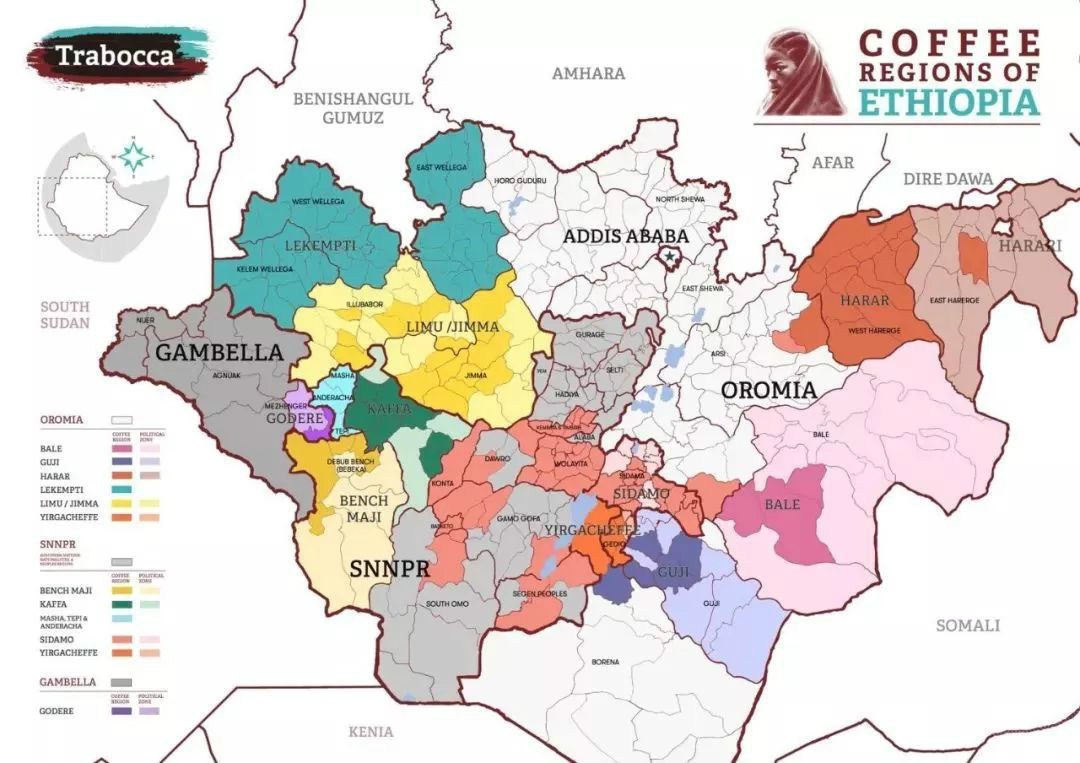
01 |Production area
Yirga cheffe is a small town in Ethiopia, 1700-2100 meters above sea level, and is synonymous with Ethiopian fine coffee. This is a wetland since ancient times. The old saying yirga means "settle down" and cheffe means "wetland". Therefore, yirga cheffe means "let us settle down in this wetland".
Yejia Xuefei (fine production area): altitude 1,800 ~ 2,000 meters| Garden coffee system|
Yegashefi is affiliated with the Sidama region and is separated due to its unique flavor.
In addition to the town of Yejia Shefei, it also includes three sub-producing areas around Wenago, Kochere, Gelena and Abaya.
There are large and small villages, micro-production areas, cooperatives and processing stations under Yejia Shefei. In most areas of Ethiopia, coffee farmers still live very hard. They do not have enough ability to build family-style processing workshops. Therefore, many processing stations will appear to collect coffee fruits from surrounding small farmers, process them and sell them to green bean merchants.
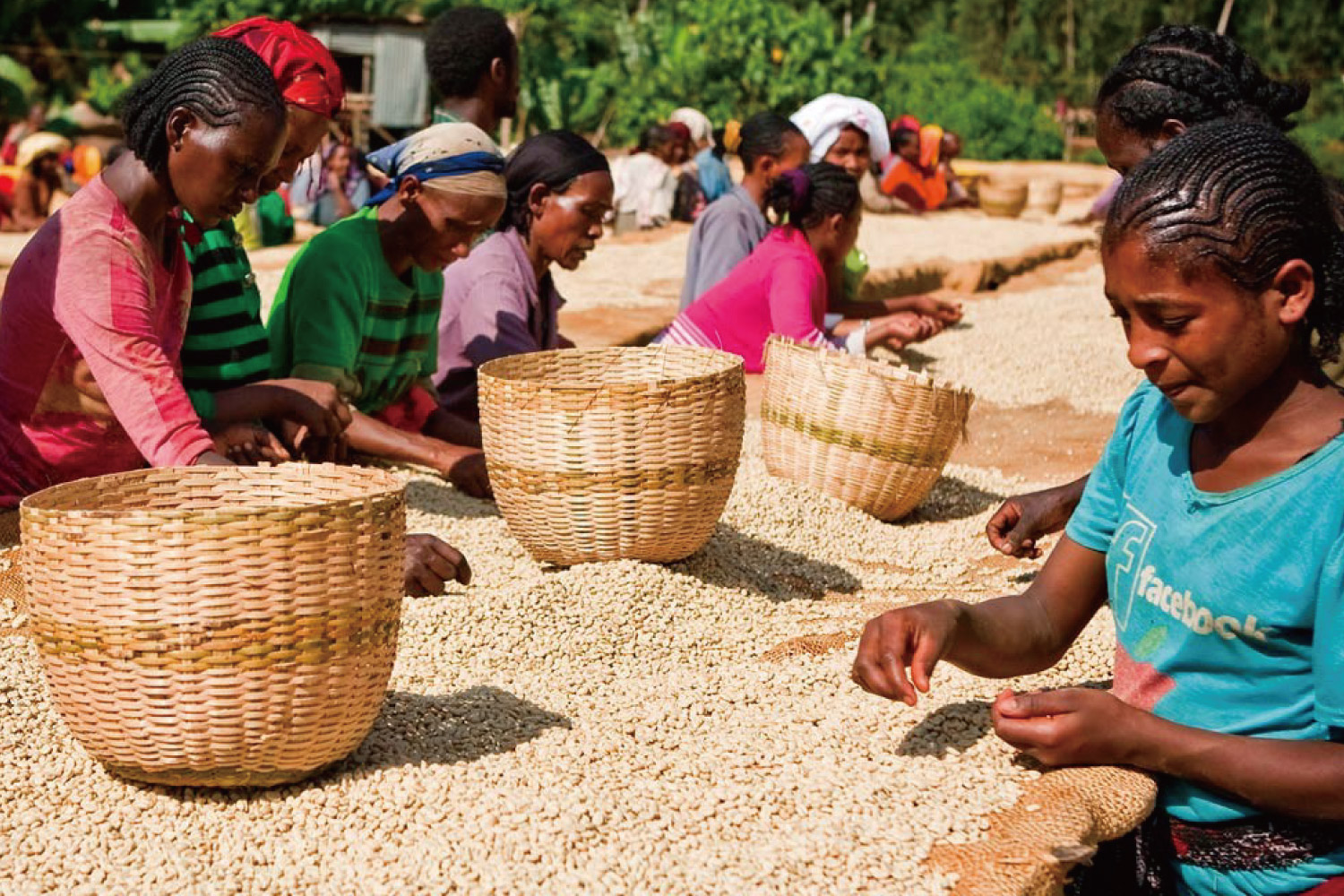
Coffee trees are mostly planted in farmers 'backyards or mixed with other crops in the field. The yield per household is not much. It is a typical pastoral coffee. Yega Shefi award-winning beans almost come from the coffee villages and communities mentioned above. The so-called "yejia sherry flavor" refers to rich jasmine flowers, lemon or lime acid aroma, as well as peach, almond sweet or tea aroma. The phrase "coffee in the mouth, flowers in full bloom" is the best way to describe it, just as flowers stimulate the comfort of taste buds and nasal olfactory cells. In addition to the floral fragrance, the body is delicate and mellow, like silk massage in the mouth, wonderful touch. Many coffee chemists have begun to study the microclimate and soil conditions surrounding Yekashefi in order to derive the growing equation for fine coffee.
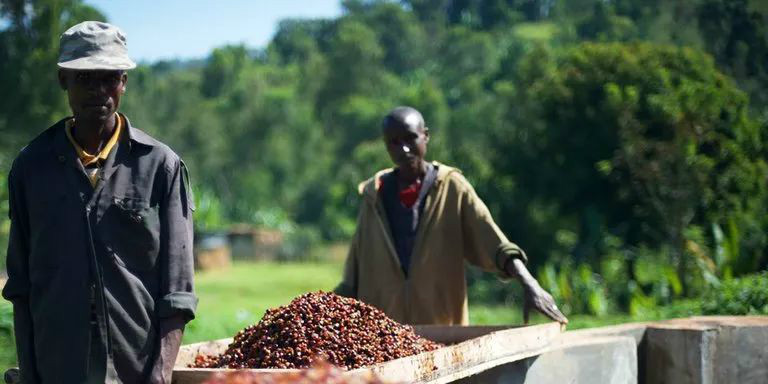
Strictly speaking, Yejia Shefei is a sub-producing area in Sidamo Province of West Damo, Ethiopia. It is located in the northwest of West Damo, near mountains and lakes. It is one of the highest coffee producing areas in Ethiopia. Yerga Sherphine itself is a small town with a population of about 20,000. The three neighboring small producing areas Wenago, Kochere and Gelena Abaya are also classified as Yerga Sherphine because the flavor of coffee produced is almost identical to Yerga Sherphine. However, the production method and flavor here are so prominent that Ethiopian coffee farmers compete to be proud of their own coffee with Yegashefi flavor, so they are independent from the West Damo production area and become the most famous production area in Africa.
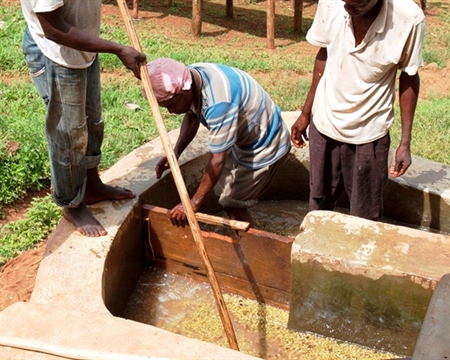
02 |Woka Cooperative
Water washing Ethiopia can reach the highest level of G1, which is very rare
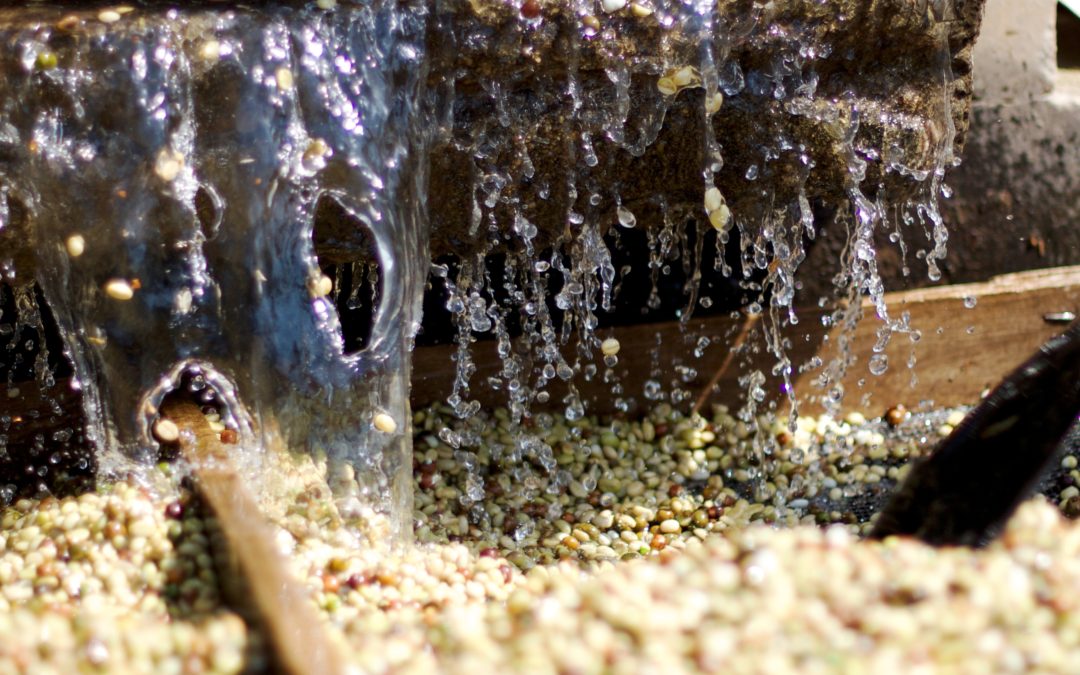
This bean comes from a single farm in Ethiopia and is processed by the Worka cooperative. Alemayehu Alako Farm is a member of the Waka Cooperative.
Woka Cooperative was founded in 2005 and joined the Yirgacheffe Coffee Farmers Cooperative Union (YCFCU) that year, known for producing high-quality sun-cured Yirgacheffe. The Waka Cooperative has about 300 coffee farmers under its umbrella. Founded in 2002, YCFCU also includes 26 other cooperatives serving more than 45000 coffee farmers.
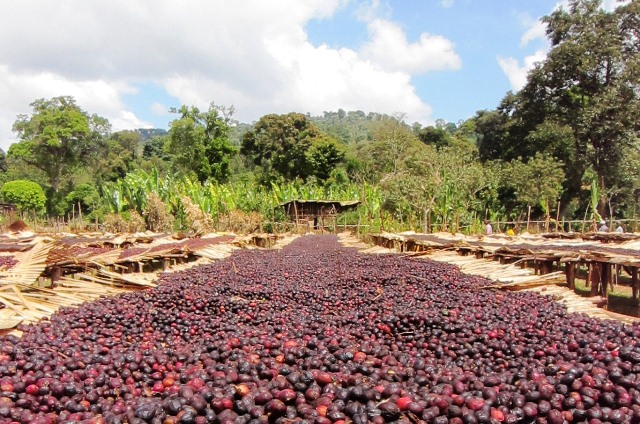
Woka is located in Gedeb, the southernmost part of Yejiashefi. In the early years, this area exported locally produced coffee beans under the name of Woka or was handled by Woka Cooperative; however, in the past two or three years, individual single sources have been excavated by coffee hunters all over the world, such as: Banko Gotiti, Banko Dadhato, Halo Bariti, etc., and the village of Guodin is the first village area to be independent a few years ago. Many small farmers are also members of the original Woka cooperative. The technology of coffee production is naturally not a problem.
Woka Cooperative, located in the south of Gedeb District, was founded in 2005 and joined the famous Yirgacheffe Coffee Farmers Cooperative Union (YCFCU) that year, which is known for producing high-quality sunburned Yirgacheffe. The Waka Cooperative has about 300 coffee farmers under its umbrella. Founded in 2002, YCFCU also includes 26 other cooperatives serving more than 45000 coffee farmers.
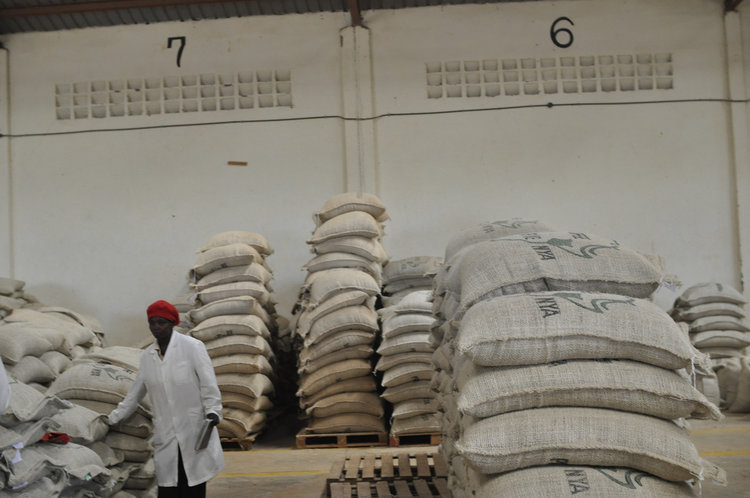
03 |approach
Yirgacheffe (Yirgacheffe) refining method is mostly washed purification method, placed in the washing tank for about 72 hours fermentation shelling, gum fermentation process produced acid, part of it will enter the beans. At the same time, because there is no pulp and gelatin attached to the parchment when dried, it lacks the unique fruity flavor of sun-dried beans, and the flavor tends to be clean and bright, and the acidity is also obvious. Dry directly outside the plant. The raw beans are manually selected, and after passing the quality inspection by the Ethiopian Coffee Cocoa Management Agency, they are traded and exported through competitive bidding.
Its annual production is about 225,000 bags (60kg per bag), which used to be mainly exported to Northern Europe (mainly Germany) and Japan, and has recently received increasing attention from North America.
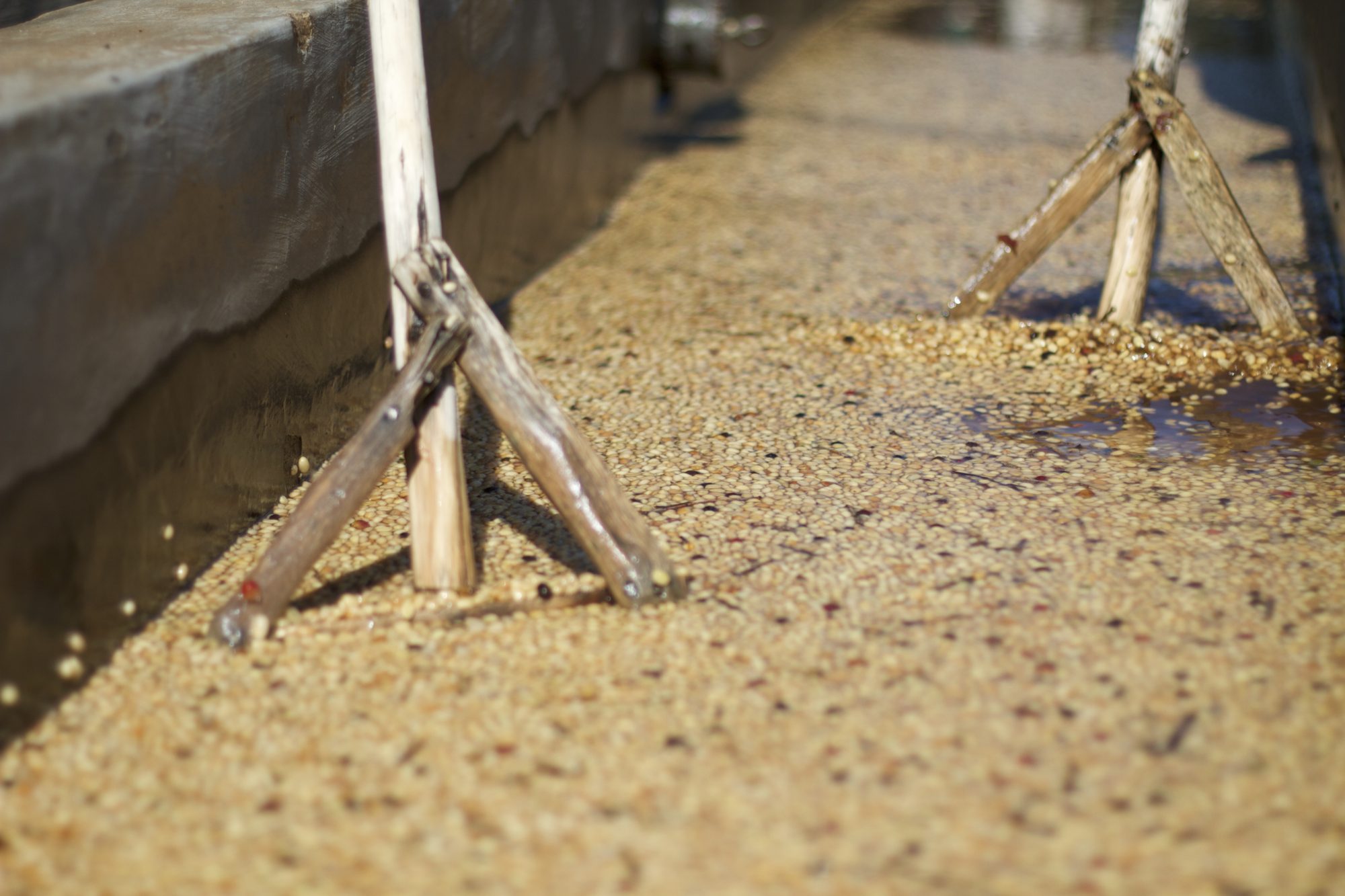
The coffee flavor of washing treatment is less likely to have wild flavor, with pure, refreshing characteristics, suitable for light roasting degree; this washing Ethiopia can reach the highest grade G1, which is already a grade with few defects.
04 |green bean analysis
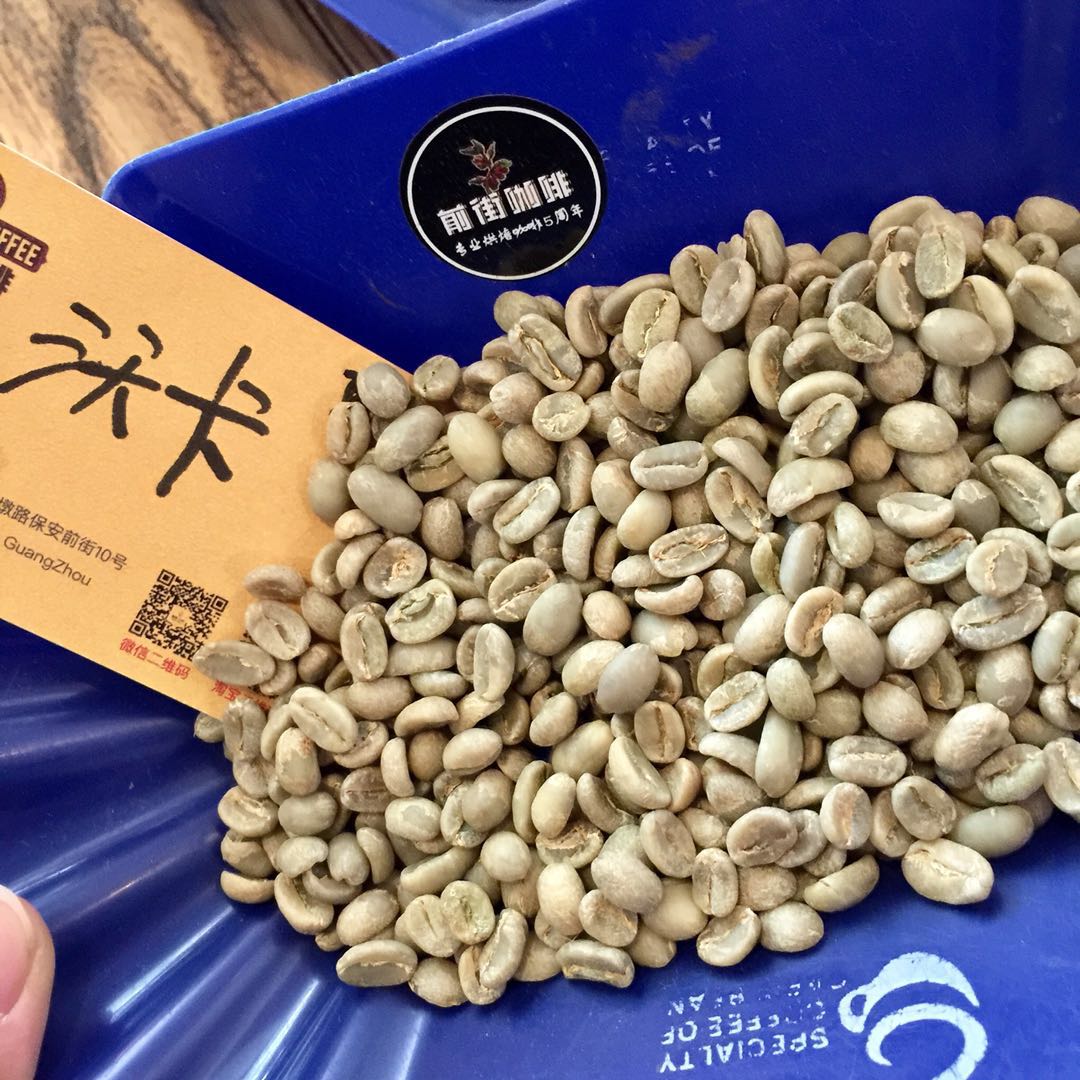
Heirlooms (native species) is a name unique to Ethiopia, and its varieties are all-encompassing, such as iron pickup, mocha, bourbon, etc. Kaffa is the cradle of Arabica coffee. If you add up the varieties (innate or derivative) of the world's producing countries to only a few hundred, this treasure trove contains tens of thousands of species, most of which are still unclassified. Heirlooms is Ethiopia's unique name, as if to tell the world that its varieties are all-encompassing, just a word. Green beans are green and uniform in size.
African coffee beans use this method of grading according to the proportion of defective beans. Indonesian beans are mainly divided into 6 grades, namely G1~G6. The highest grades of water-washed beans are G1 and G2; the highest grades of sun-dried beans are G1 and G3.
What does that mean? As follows:
Washing: Grade-1;Grade-2 (G1>G2)
Sunburn: Grade-1 and Grade-3 to Grade-5 ( G1>G3>G4>G5)
A few things to note:
a) Gr-1 for both washing and solarization, provided that "zero" defects and Premium Cup. Whether washed or sunburned, Gr-1 is a rating for Fine of Fine or Cup of Excellence coffee.
b) The lowest grade of sun-exposed snow and Sidama is Gr-4.
c) Beans of the same grade, e.g. Rim Gr-2, are good or bad depending on the exporter's sorting level and inputs.
d) More than the existing "zero" defect requirement, Gr-1 beans (both washed and sun-dried) are extremely rare because of the high processing costs and few suppliers will do it.
05 |baking analysis
Soy density is quite hard, baking with high fire climbing, turning yellow point in 5 minutes and 30 seconds, and then reduce the fire to open the damper to enter the Mena reaction, to 160℃ to reduce the fire again to lengthen the Mena reaction time. The first explosion is about 186.3℃. This washed bean needs to reduce the fire power before the first explosion to prevent it from climbing too fast and burning bitter. Beans at 194.2℃ at 1 minute and 40 seconds.
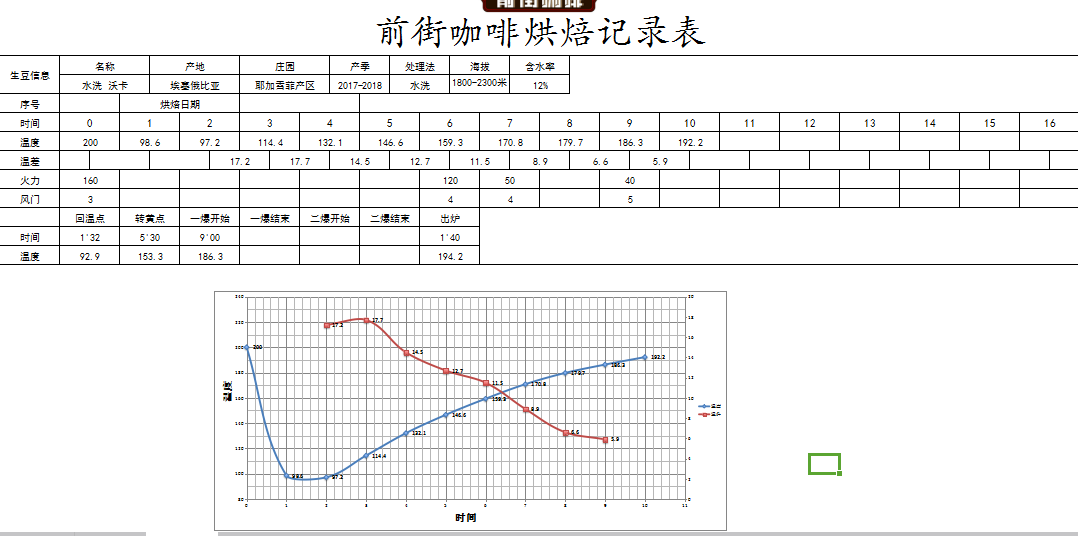
Baking machine Yangjia 600g semi-straight fire
Preheat the furnace temperature to 200 ℃ and enter the boiler. Open the damper for 3, 30s and then open the fire. Adjust the fire to 160. Return to the temperature point at 1:32. Turn yellow at 5:30 seconds. The smell of grass disappears. Enter the dehydration stage. Reduce the fire to 120. Open the damper to 4. When it reaches 170 ℃, reduce the fire to 50 again.
Eight minutes after dehydration, the bean surface appears wrinkled and black stripes, toast flavor to coffee aroma, a prelude to explosion, then reduce the fire to 40, and pay attention to the sound of explosion. At 9:00, the first explosion starts, fire is adjusted to 40, and the throttle is fully opened to 5. The development time after explosion is 1 minute and 40 seconds, and the temperature is 194.2℃.
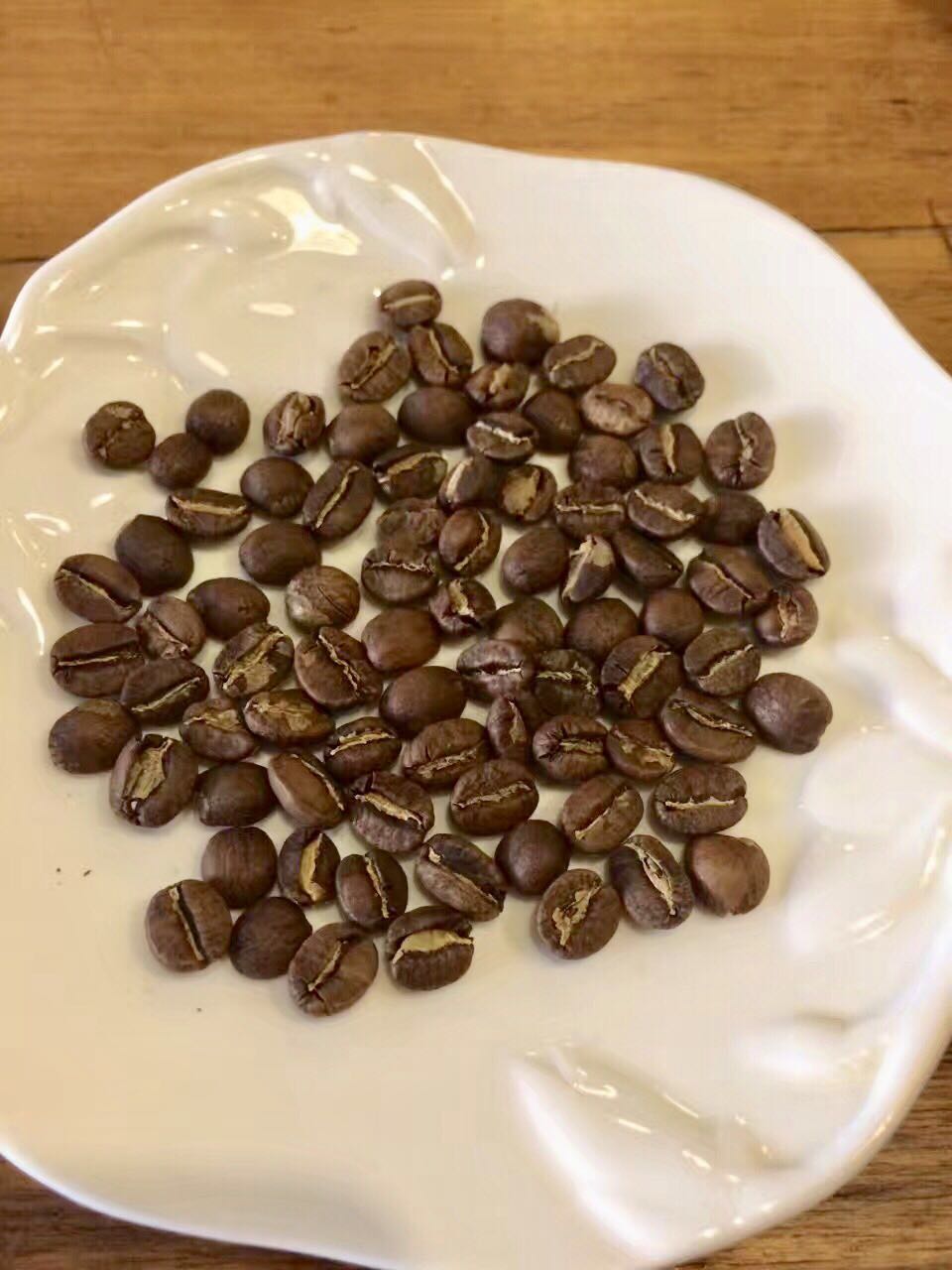
Flavor: This bean is delicately washed, making the bean acid more delicate, showing the sour taste of yellow lemon, caramel sweetness, cream, lemon black tea flavor, and floral aftertaste.
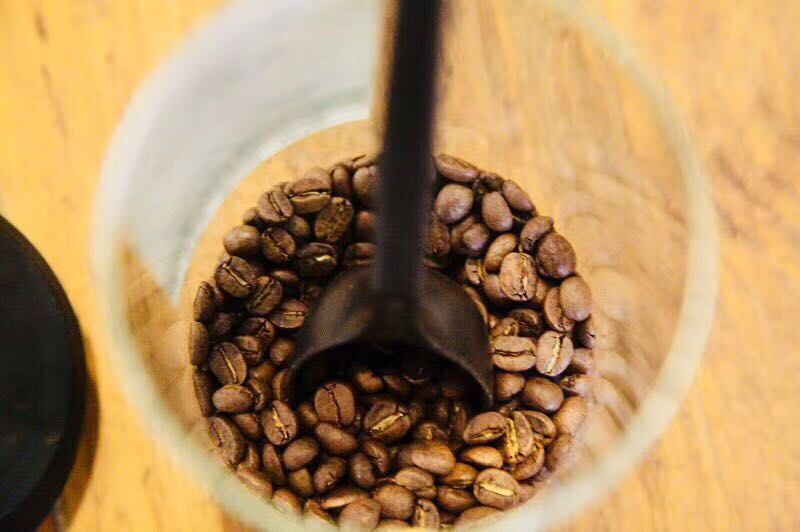
06 |brewing analysis
Fractional extraction method of three-stage water injection
The layers are richer, and the flavor of the coffee before, during and after the coffee can be clarified. The practice is to increase the amount of water injected each time after steaming, usually when the coffee liquid is about to fall to the surface of the powder layer, and to do three stages of extraction with small, medium and large water flows:
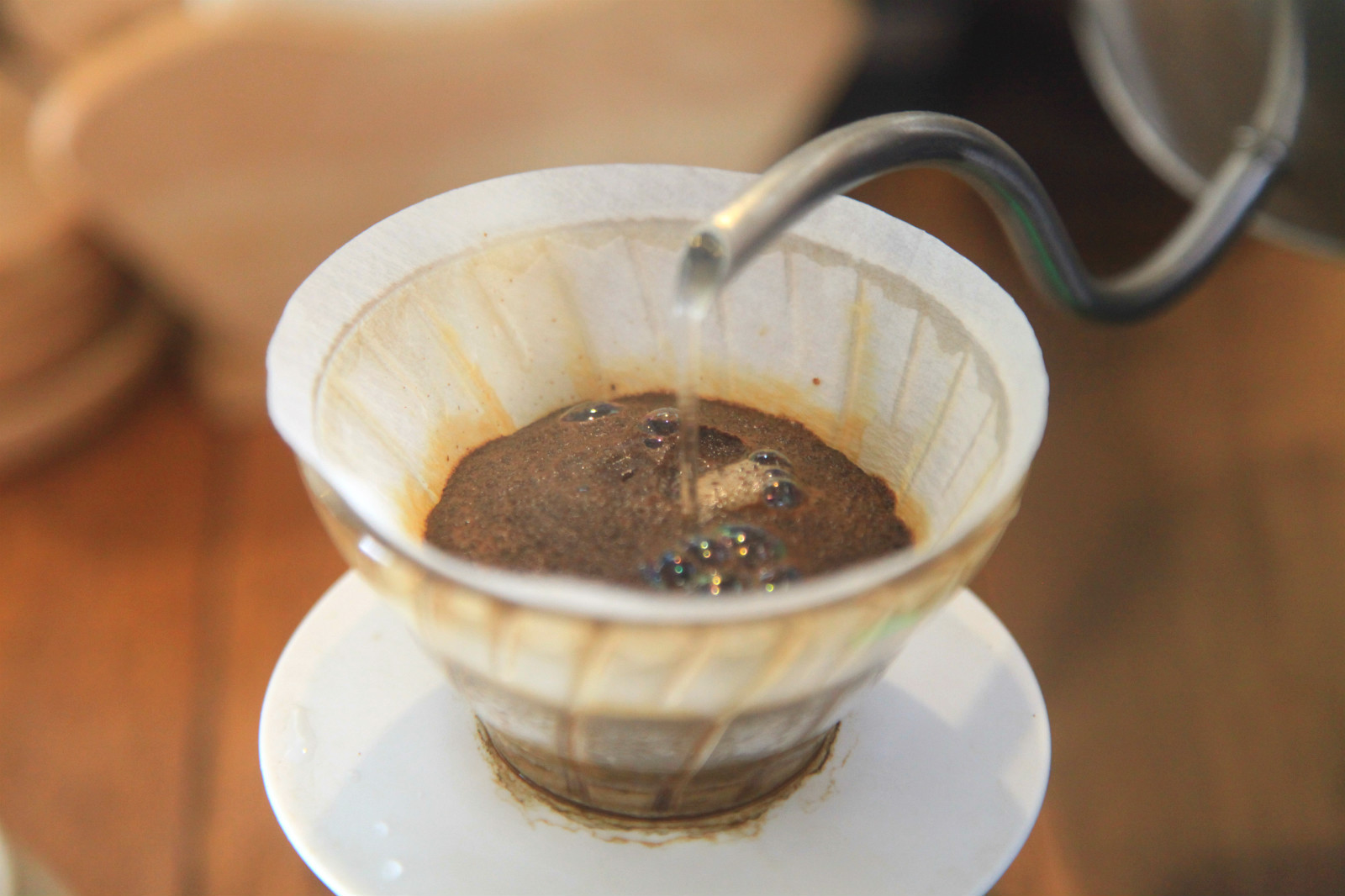
Recommended cooking methods: siphon, hand brewing
Abrasion: 3.5 (Japan Kofuji R440)
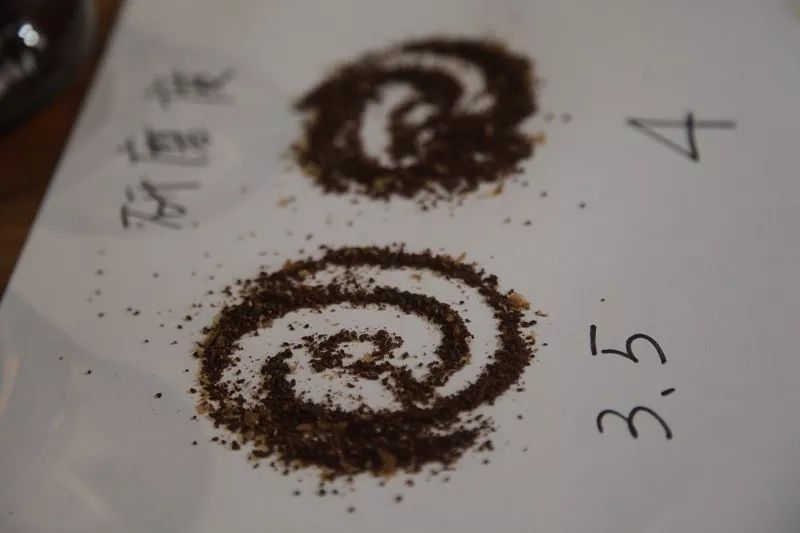
V60 filter cup, 15 grams of powder, water temperature 90 degrees, grinding 3.5, water powder ratio close to 1:15
30g water steams for 30s
Stage: water injection to 120g water cut, slow water injection to 225g
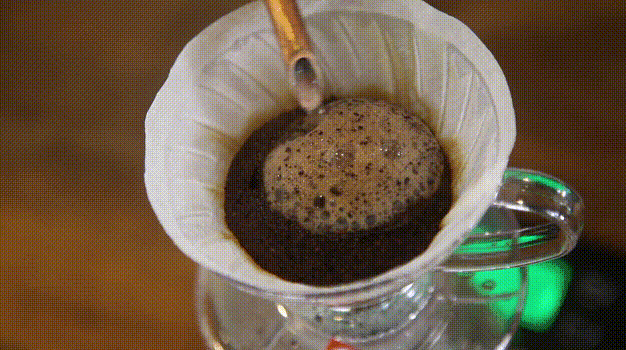
30-120-225
Other suggestions for trickle-filtration extraction:
Normal pressure, recommended abrasiveness 3.5-4/water temperature 86-88°C
Aile pressure, recommended 2.5 grinding degree, water temperature 86-88°C
Ethiopia Yega Sherphine Wash Yega Original Species Woka WorkaG1 Single Product Fine Coffee Bean
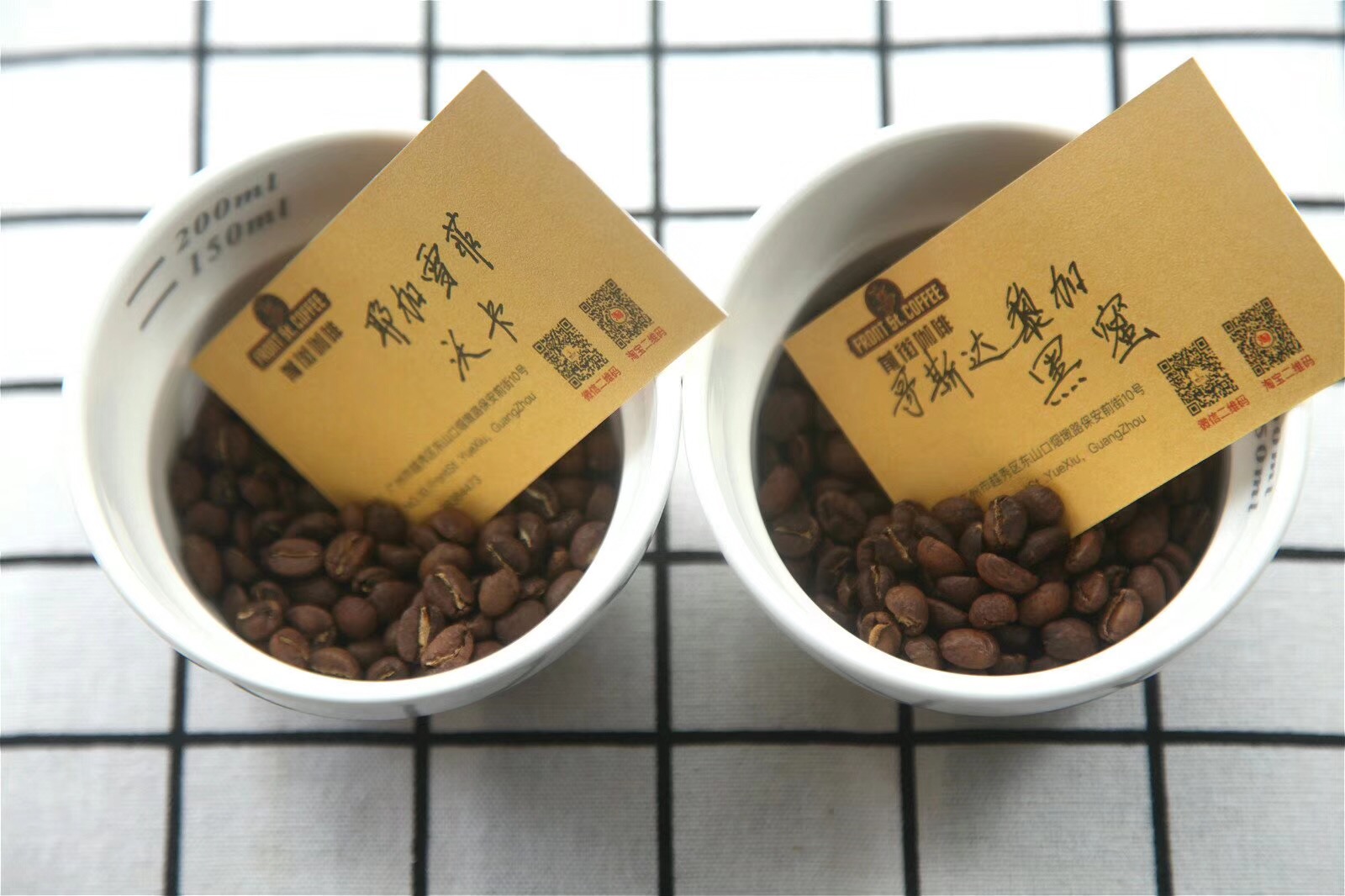
Front Street [Ice Drop Formula]: Yega Shefi Voka 30g + Costa Rica Black Honey 30g Powder Water Ratio 1:10, BG Grinding 3D (close to cup grinding),
Black honey has orange flower fragrance, caramel, cream feeling obvious, plus yegawka, caramel feeling more prominent,
It also has a little citric acid [wit] and it's very refreshing to drink, and it's perfect for a drink on a hot summer day.
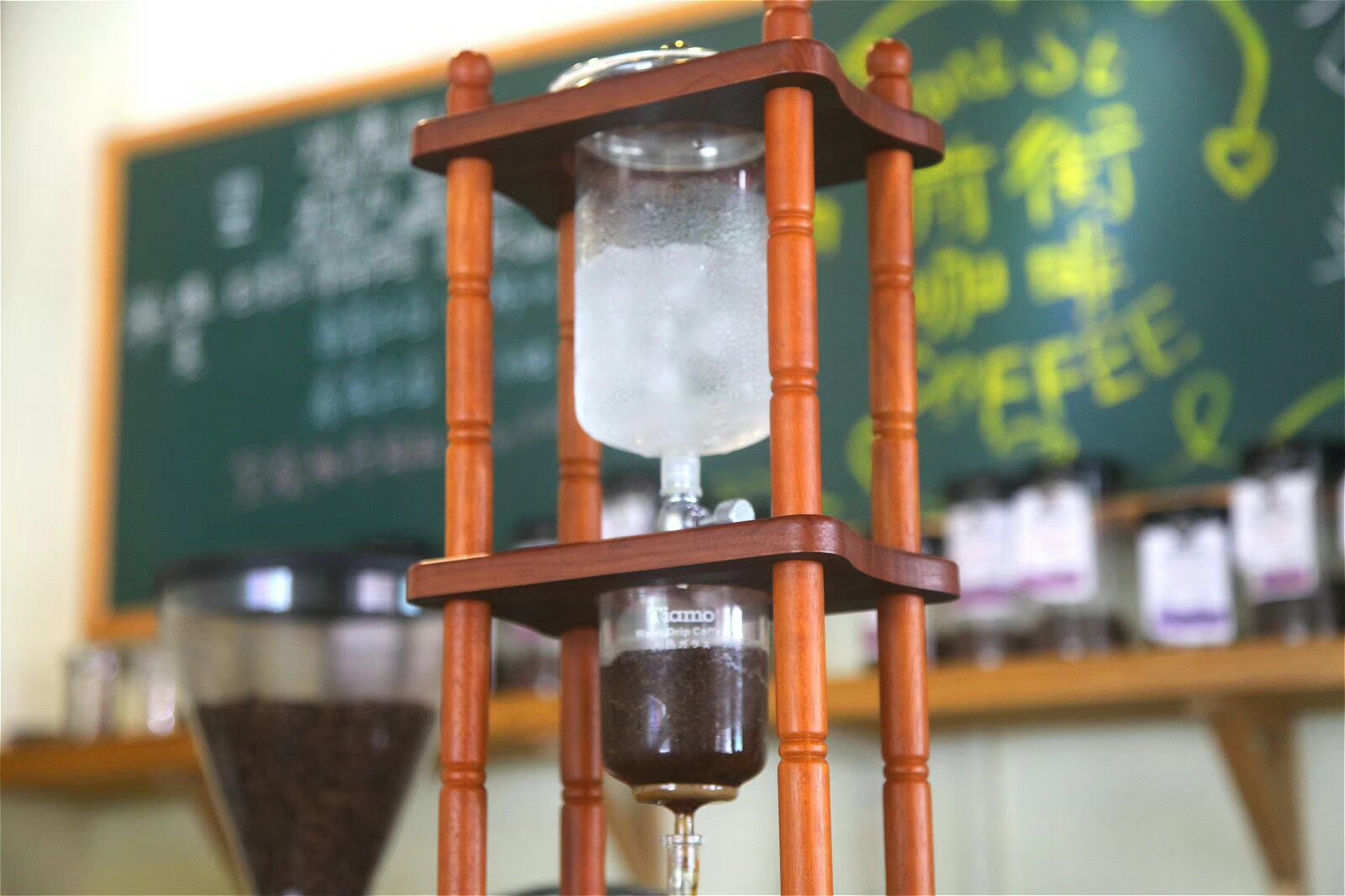
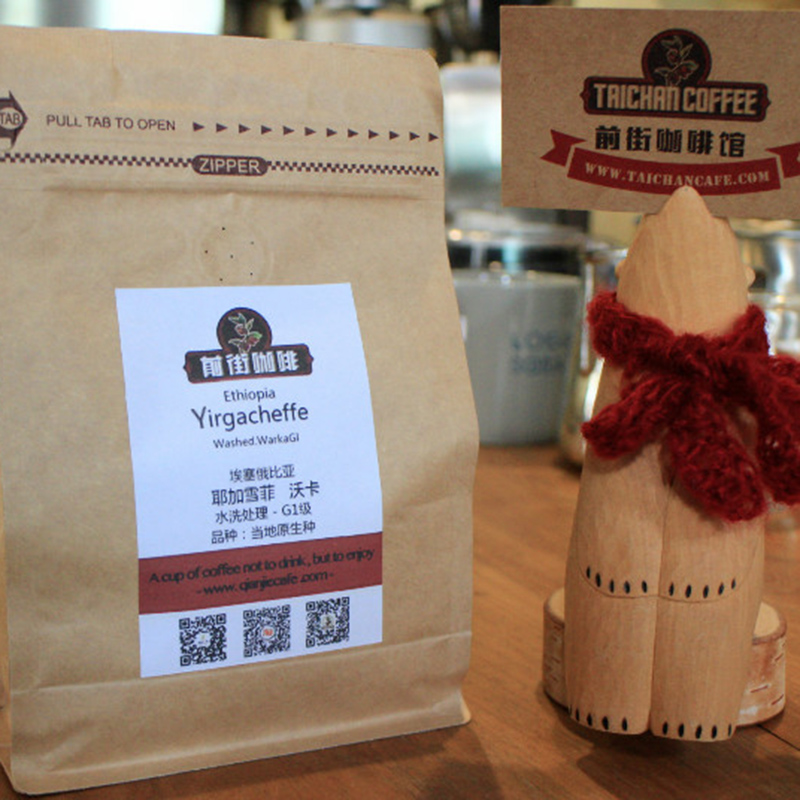
Taobao Link: item.taobao.com/item.htm? spm=a1z10.3-c-s.w4002-15673140470.14.e51a1b507LLo9M&id=532914414923
Important Notice :
前街咖啡 FrontStreet Coffee has moved to new addredd:
FrontStreet Coffee Address: 315,Donghua East Road,GuangZhou
Tel:020 38364473
- Prev
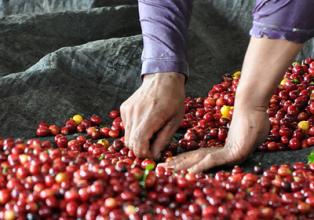
Elegant taste moderate sour Mexican coffee variety characteristics taste introduction to the flavor of fine coffee beans in the manor
The main producing areas are: Kolabegu, Australia Aluca states, the products are mostly washed beans produced in the highlands, with good aroma and sour taste, the grade is divided into three categories according to altitude: Aldura (219m-1280 m), Prima. Rabe Society (853-1006 m) Puine. Raba Society (640-762 m). Coffee beans are mainly exported to the United States: Aldura, Mexico. Mouth
- Next
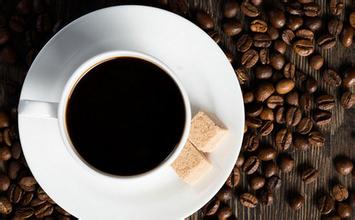
Savoury, balanced Salvadoran Himalayan Coffee Variety Features Taste Manor Boutique Coffee
Sunshine 100 Himalaya, located at the intersection of two rivers of Nanbin Road, Chongqing, occupies the center of billiard stone CBD, and together with Jiefangbei CBD and Jiangbeizui CBD, it constitutes the core of Chongqing CBD. Settling in Sunshine 100 Himalaya also means sitting in the golden triangle of Chongqing CBD! Secondly, the development and construction of Sunshine 100 Himalayas invite world-class teams, such as the world's top luxury.
Related
- Detailed explanation of Jadeite planting Land in Panamanian Jadeite Manor introduction to the grading system of Jadeite competitive bidding, Red bid, Green bid and Rose Summer
- Story of Coffee planting in Brenka region of Costa Rica Stonehenge Manor anaerobic heavy honey treatment of flavor mouth
- What's on the barrel of Blue Mountain Coffee beans?
- Can American coffee also pull flowers? How to use hot American style to pull out a good-looking pattern?
- Can you make a cold extract with coffee beans? What is the right proportion for cold-extracted coffee formula?
- Indonesian PWN Gold Mandrine Coffee Origin Features Flavor How to Chong? Mandolin coffee is American.
- A brief introduction to the flavor characteristics of Brazilian yellow bourbon coffee beans
- What is the effect of different water quality on the flavor of cold-extracted coffee? What kind of water is best for brewing coffee?
- Why do you think of Rose Summer whenever you mention Panamanian coffee?
- Introduction to the characteristics of authentic blue mountain coffee bean producing areas? What is the CIB Coffee Authority in Jamaica?

